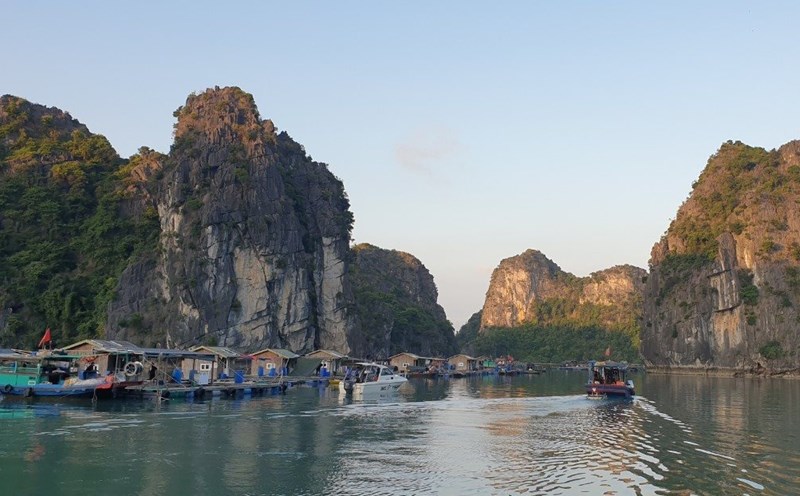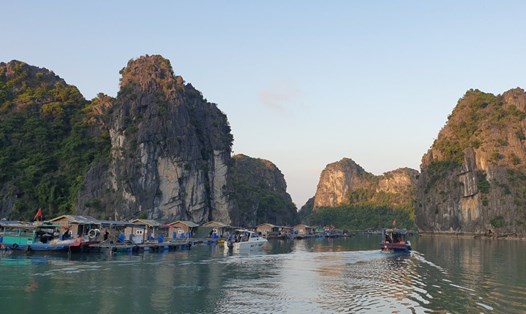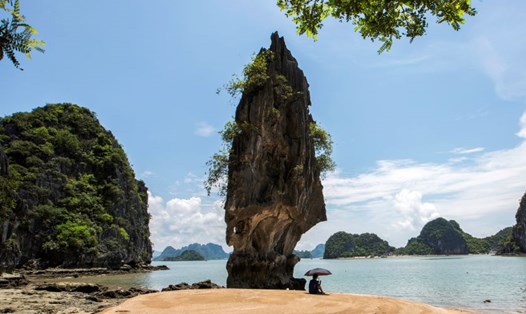To achieve that result, Quang Ninh province, Ha Long Bay Management Board, central ministries, branches and relevant parties had to go through a 3-year journey, from basic research, document preparation, proposals, international mobilization..., with the following main milestones:
In July 1999, the dossier submitted to the World Heritage Committee for the second recognition of Ha Long Bay for its geological value was completed.
At the 23rd Conference of the World Heritage Committee, held in Marakesh City, Morocco in early December 1999, the World Heritage Committee officially confirmed the Dossier of Ha Long Bay and included it in the program of dossier appraisal and recognition of the geological value of Ha Long Bay in 2000.
In March 2000, Professor Elery Hamilton Smith (Australian expert) - a member of the International Union for Conservation of Nature and Natural Resources (IUCN) - was sent to Ha Long to assess the authenticity of the records, geological values as well as assess the management status and make recommendations.
In an article 10 years ago, on the occasion of the 20th anniversary of Ha Long Bay being recognized as a World Natural Heritage for the first time, Mr. Nguyen Van Tuan - the first Head of the Ha Long Bay Management Board, who directly participated in the process of preparing documents and procedures to submit to UNESCO for the second recognition of Ha Long Bay - said that in the appraisal report, Professor Elery Hamilton Smith highly appreciated Ha Long Bay.
Professor Elery Hamilton Smith's report said: "Ha Long Bay is the largest area in the world with limestone terrain eroded by sea water, it is a typical rich, diverse and complex of ocean landscapes. No other area has the diversity of geomorphology as Ha Long Bay".
In July 2000, the Mid-Year Session of the World Heritage Center Office in Paris officially proposed that the World Heritage Committee recognize Ha Long Bay as a World Natural Heritage for its outstanding geological and geomorphological values.
On December 2, 2000, at the 24th Conference of the World Heritage Committee, held in Cairns City, Australia, after listening to the presentation of the World Heritage Center and the assessment of IUCN, the World Heritage Committee officially resolved to recognize Ha Long Bay as a World Heritage Site for the second time according to the criteria (i) on geology and geomorphology of the International Convention on World Heritage.
The fact that Ha Long Bay was recognized by UNESCO for the second time for its geological and geomorphological value once again affirms the outstanding global value of Ha Long Bay. Ha Long Bay is not only famous for its magnificent and majestic beauty of the islands, but also a giant geological museum, where important traces of the formation, movement and development of the earth's crust in this area are condensed. When looking at and contemplating it, we can read the tectonic history of this land.
Titles of Ha Long Bay
- In 1962, Ha Long Bay was specially ranked as a national scenic relic by the Ministry of Culture and Information (now the Ministry of Culture, Sports and Tourism).
- On December 17, 1994, at the 18th session, UNESCO recognized Ha Long Bay as a World Natural Heritage with global aesthetic value.
- On December 2, 2000, UNESCO recognized Ha Long Bay as a World Heritage Site for the second time with its geological and geomorphological values.
- In August 2009, Ha Long Bay was ranked by the State as one of 10 special national monuments.
- On November 11, 2011, Ha Long Bay was recognized as one of the new 7 natural wonders of the world.
-In September 2023, Ha Long Bay - Cat Ba Archipelago was recognized by UNESCO as the first inter-provincial - municipal World Natural Heritage in Vietnam.
-In September 2024, Ha Long Bay - Cat Ba Archipelago continued to be recognized by the International Union of Geological Sciences as an International Geological Heritage.














